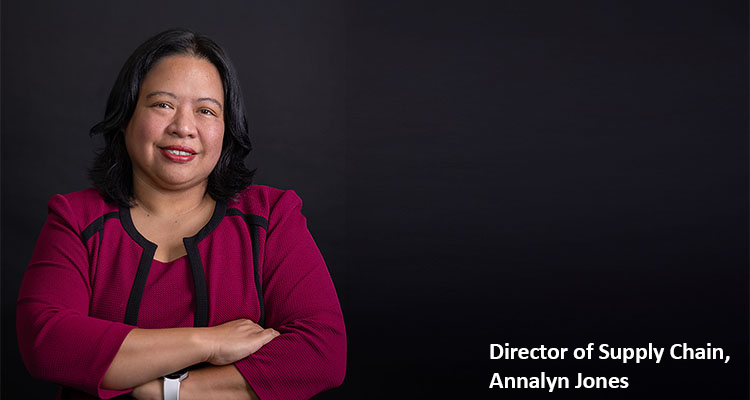How FlexGen’s proprietary technology can futureproof vulnerabilities in the grid
FlexGen designs and integrates battery energy storage systems and has developed the software platform (HybridOS™) that is enabling today’s energy transition. Energy, Oil & Gas sat down for a brief overview of FlexGen’s history from Director of Supply Chain, Annalyn Jones: “FlexGen got its start in 2009, providing critical load, 50kW (kilowatt) microgrids to remote locations for the US Military. By 2014 we were installing and integrating 1MW (megawatt) behind-the-meter microgrids. A few years later, in 2018, we were installing 10MW medium-scale, distribution-level energy storage systems with energy trading and black start capabilities. Today, we provide utility-scale, 450MW+ energy storage solutions combined with our best-in-class energy management software, HybridOS™, to help our clients realize the most value from their energy investments.
“Over our history, we’ve never wavered from being customer obsessed but we have evolved with the market to a software-first, hardware-agnostic approach, focusing on our customers and their system availability. In fact, a recent report from Orennia showed that FlexGen systems performed at 98 percent availability in 2023 versus top-tier competitors at 93 percent. That five percent is valuable to our customers and valuable to the stability and evolution of the grid.”
Over the course of its history, FlexGen has completed over 100 energy storage projects across ten US markets. Annalyn expands: “We have installed and/or contracted over eight gigawatt hours of energy. That is enough to power over 225,000 homes in North America. We have continued to gain expertise and experience of specialist installations throughout our history, which has led to us becoming the only non-OEM company to make BNEF’s (Bloomberg New Energy Finance) Q1 2024 Tier 1 Energy Storage Suppliers List with over $250M in funding.”
Continuous improvement
Annalyn goes on to shed more light on FlexGen’s client-led approach: “The way we work with clients is both simple and adaptable. We meet them at any stage of their project development and tailor solutions to fit their specific needs. With a deep focus on customer success, we help clients accelerate their path to revenue with activation services, we maximize the value of their assets with our proprietary HybridOS™ software and our round the clock lifecycle services team, and we extend the lifespan of their batteries with data analytics and augmentation services (where augmentation is the process by which storage companies will add additional capacity as the assets naturally degrade over time). We also support our clients with community engagement resources, including information for town hall meetings in areas where storage projects are being developed. FlexGen is committed to continuous improvement, including enhancing our community outreach through local fire and rescue training, as safety is one of our core values.”
When asked how FlexGen achieves industry-best availability, FlexGen breaks this process down into three key phases; detection, evaluation and action. Annalyn explains: “FlexGen’s energy management systems (EMS) are designed with advanced monitoring and diagnostic features that enhance performance, reliability, and ease of operation. There are three key detection features, digital twin for rack-level anomaly detection, auto-detection of four common anomalies, and custom conditional alerts. Together, these features combine to offer comprehensive, real-time monitoring of FlexGen’s battery energy storage systems, ensuring that operators can swiftly detect and respond to any issues.
“When it comes to analysis, FlexGen’s HybridOS™ energy management software, combined with the expertise of its performance engineering team, offers powerful tools for evaluating and optimizing the performance of battery energy storage systems (BESS). The three key evaluation features, proprietary state-of-charge (SOC), proprietary state-of-health (SOH), and custom reporting and dashboards all work synergistically to provide operators with an advanced level of insight into the real-time performance, health, and optimization of their storage systems. The SOC, SOH, and custom reporting and dashboards work together to deliver a comprehensive suite of performance insights, helping operators make better-informed decisions about their battery energy storage systems.
tools for evaluating and optimizing the performance of battery energy storage systems (BESS). The three key evaluation features, proprietary state-of-charge (SOC), proprietary state-of-health (SOH), and custom reporting and dashboards all work synergistically to provide operators with an advanced level of insight into the real-time performance, health, and optimization of their storage systems. The SOC, SOH, and custom reporting and dashboards work together to deliver a comprehensive suite of performance insights, helping operators make better-informed decisions about their battery energy storage systems.
Significant advancements
“If analysis shows intervention is necessary, FlexGen has detailed processes in place to overcome any challenges that may arise. The remote operations center (ROC), as part of our lifecycle services team, plays a critical role in ensuring the smooth, efficient, and proactive management of the BESS throughout its operational lifespan. FlexGen can first address issues remotely, as one of the most common problems is battery balancing. Our new auto-balancing feature can resolve this remotely. If we can’t resolve the issue remotely, we can use our software diagnostics to dispatch a field team to investigate the issue on-site. The software features are designed to not only address issues promptly but also to optimize system performance, reduce operational costs, and extend the overall lifespan of the BESS.”
Annalyn moves on to highlight how FlexGen’s recently launched battery management system helps to overcome some specific challenges the battery industry is facing: “As the domestic utility-scale battery market continues to expand, several vital concerns have emerged regarding the use of foreign-owned battery management systems (BMS), including cybersecurity risks; stakeholders are increasingly wary of the potential vulnerabilities that non-US-based BMS present to battery sites and the electric grid’s reliability. Supply chain uncertainty is also a concern, as geopolitical dynamics could abruptly necessitate a shift to US-based BMS, potentially disrupting the entire industry and stalling critical energy projects. There are also performance limitations, where existing BMS solutions have been designed to focus on single-battery applications driven by the automotive industry’s needs. This bias does not align with the demands of large-scale energy storage projects, which require robust, site-level control capabilities.
“We were excited to announce the launch of our US-based Battery Management System (BMS), back in September of 2024. It is a significant advancement poised to address these challenges head on. Our battery management system (BMS) is designed, developed, and integrated in Durham, North Carolina, reflecting our commitment to improving grid reliability and equipping our customers with the essential tools to thrive in today’s complex and ever-changing energy environment while safeguarding their investment from current and future regulatory and cybersecurity risks.”
Annalyn and her team are looking forward to further developing and expanding on FlexGen’s achievements so far. “In five years, FlexGen will be a global powerhouse driving the energy transition by delivering innovative, scalable, and sustainable solutions in energy storage and management software,” she concludes. “With a focus on advanced technology, strategic partnerships, and a customer-first approach, FlexGen will continue to lead the charge in the transformation of the energy sector, helping customers navigate the complexities of the energy transition and meet their sustainability goals.”
